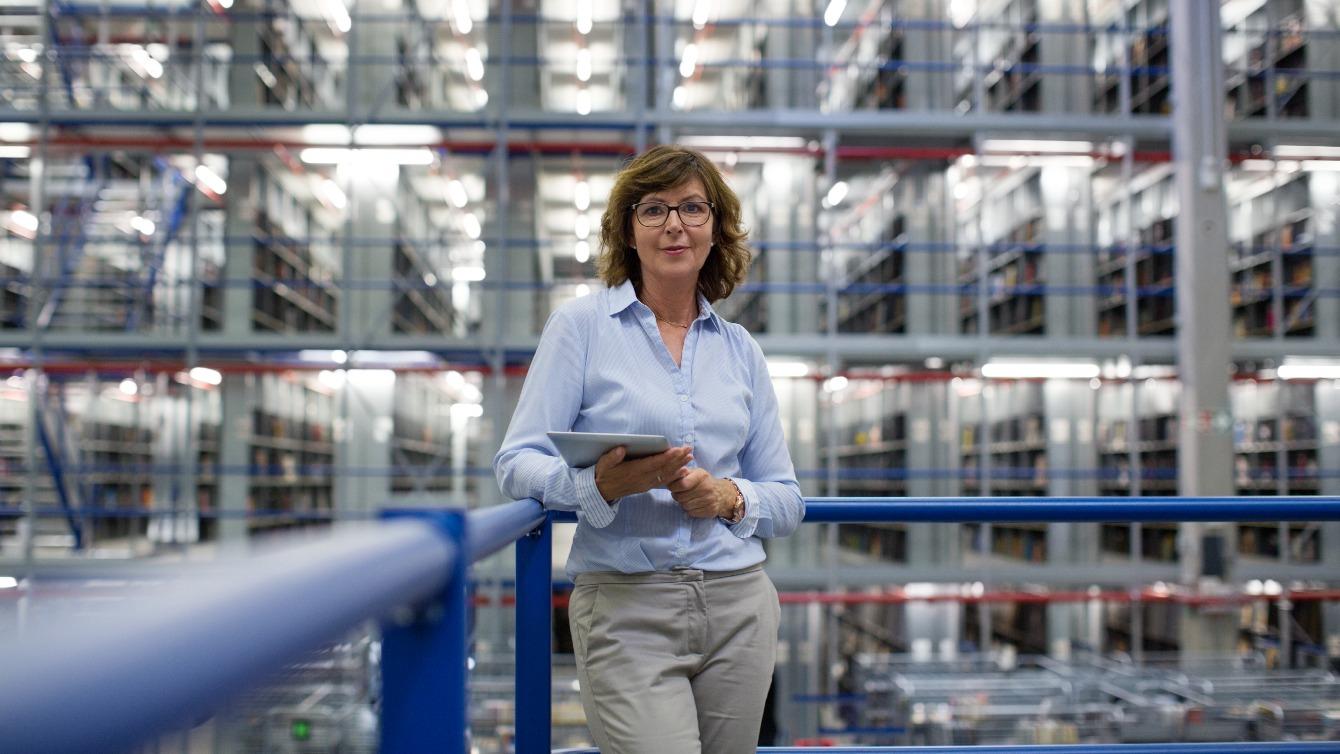The Dutch transport sector, a critical pillar of the nation's economy, is currently grappling with a significant challenge: low productivity growth. Despite being a leader in digitalisation compared to other countries, the sector's progress in adopting digital technologies has been notably slow, especially when juxtaposed with other industries within the Netherlands. This blog explores the current state of digitalisation in the Dutch transport sector, the opportunities that lie ahead, and the potential impact of increased digitalisation on productivity.
Struggling with low productivity growth
The Dutch transport sector has seen a decline in productivity over recent years. According to previous PwC research, the sector was around 4.3% less productive in 2022 than it was in 2015. This decline is concerning, especially when other sectors, such as manufacturing, have shown significant productivity improvements during the same period. The transport sector's productivity struggles are multifaceted, involving labour shortages, economic uncertainties, and a slow transition to sustainable fuels.
Slow pace of digitalisation
One of the most striking aspects of the Dutch transport sector is its slow pace of digitalisation. While the Netherlands is renowned for its advanced digital infrastructure and innovative capabilities, the transport sector has lagged behind in adopting digital technologies. This lag is evident when compared to other sectors within the country, such as finance and manufacturing, which have embraced digital transformation more rapidly.
Several factors contribute to this slow digitalisation. High costs and a lack of standardisation are significant barriers. Additionally, the labour-intensive nature of the transport sector, particularly in sea and air freight, has made it challenging to implement automation and digital solutions. Despite these challenges, there are numerous opportunities for digitalisation within the sector.
Data analytics: a lagging performer
Despite the potential benefits, the transport sector in the Netherlands has been one of the worst performers in data analytics. Even in use cases that are highly relevant to the sector, such as the use of data analytics on satellite data or location data from portable devices or vehicles, adoption rates are low. Less than 12% of companies in the Dutch transport sector utilise data analytics for such purposes.(1) This underutilisation of data analytics is a missed opportunity, as it can provide valuable insights into operational efficiencies, customer preferences, and market trends.
Opportunities for digitalisation
The slow pace of digitalisation in the Dutch transport sector is particularly striking given the numerous existing possibilities. Here are a few high-level examples:
- Automation and robotics: Implementing automation in warehouses and distribution centres can significantly enhance efficiency and reduce labour shortages. Technologies such as automated guided vehicles (AGVs) and robotic process automation (RPA) can streamline operations and improve accuracy.
- Blockchain technology: Blockchain can enhance transparency and security in supply chain management. By providing a tamper-proof ledger of transactions, blockchain can reduce fraud, improve traceability, and streamline customs processes. Additionally, blockchain might facilitate collaboration among different stakeholders and minimise administrative overhead by automating and securing data exchanges.
- Internet of Things (IoT): IoT devices can provide real-time data on vehicle performance, cargo conditions, and route efficiency, minimising idle time at terminals and mitigate potential disruptions. This data can be used to optimise routes, reduce fuel consumption, and improve maintenance schedules. By using IoT-enabled devices and sensors within cargo containers and transportation assets, it is possible to further automate the verification of transport documents, improve real-time tracking and monitoring capabilities.
- Artificial Intelligence (AI): AI can be used for predictive maintenance, demand forecasting through analysis of big data, optimisation of resource allocation and streamlining of scheduling. By analysing vast amounts of data, AI can help transport companies make more informed decisions and improve operational efficiency, by improving asset utilisation.

The role of digitalisation in enhancing intermodal freight transport Productivity
Digitalisation can also catalyse a systemic change. Intermodal freight transport can significantly increase productivity by leveraging the strengths of different transportation modes, such as rail, road, and sea, to optimise the movement of goods. This approach allows for more efficient use of resources, reduces congestion on individual transport modes, and minimises environmental impact. By combining the advantages of each mode, intermodal transport can offer more reliable and cost-effective solutions, leading to improved overall efficiency in the supply chain. Additionally, the ability to transfer goods seamlessly between different modes reduces handling times and the risk of damage, further enhancing productivity.(2)
Digitalisation plays a crucial role in the success of intermodal freight transport by enabling the seamless exchange of information and coordination among various stakeholders. While traditional paper-based exchange of information and documents still prevails in many countries, transforming traditional analogue processes into digital formats allows for real-time tracking, automated documentation, and efficient communication, which are essential for the smooth operation of intermodal transport. The lack of interoperable standards in data exchange remains a significant challenge, but by adopting digital solutions and standardised data formats, the transportation sector can overcome these challenges, ensuring that intermodal freight transport remains a reliable and productive option for the future.(3)
The potential positive side effects of increased digitalisation
Beyond the more obvious and direct effects of digitalisation on enhanced operational efficiency, improved decision-making and increased competitiveness, there are also significant positive side effects for the transportation industry:
- Sustainability: Embracing digital technologies can facilitate the transition to more sustainable practices. For instance, IoT devices can track fuel consumption and monitor emissions, enabling companies to take steps to reduce their environmental footprint. This proactive approach not only benefits the planet but also helps companies adhere to increasingly stringent environmental regulations.
- Attracting talent: A technologically advanced sector is more appealing to young, tech-savvy professionals. By investing in digitalisation, the transport industry can attract a new generation of workers who are eager to innovate and drive the industry forward. This influx of talent can help address labour shortages and infuse fresh ideas and perspectives into the sector.
Conclusion
While the Dutch transport sector has been slow to digitalise compared to other sectors, it remains a leader in digitalisation on the global stage. The slow pace of digitalisation is a missed opportunity, especially given the numerous benefits that digital technologies can bring. By embracing digitalisation, the Dutch transport sector can overcome its current productivity challenges, enhance operational efficiency, and maintain its competitive edge in the global market. The future of the Dutch transport sector lies in its ability to harness the power of digital technologies and transform itself into a more efficient, innovative, and sustainable industry.
Despite the many benefits brought by digitalisation, several challenges hinder their adoption, affecting the industry's efficiency, reliability, and security. These challenges include the need to overhaul established business processes, high initial setup costs, and increasing concerns about cybersecurity.(4) Addressing these issues is essential to harness the full potential of technological advancements in transport and logistics.
Footnotes
- Eurostat
- United Nations Economic Commission for Europe - Handbook on Digitalization and Automation in Intermodal Freight Transport
- Ibid.
- Ibid
















